
TOYOTA has bowed to market pressure and upgraded the tow rating of Prado automatic models from 2500kg to 3000kg, bringing it into line with its major competitors. Manual transmission models (only available in GX and GXL) remain at 2500kg.
The update is well overdue, as even the Prado’s cheaper sibling, the Fortuner, offers a 2800kg tow rating, and competitors like the D-MAX, Everest and Trailblazer offer 3000kg. The Pajero Sport tops them all with 3100kg.
The tow rating upgrade for Prado comes off the back of a Gross Combination Mass (GCM) upgrade from 5370kg to 5990kg. The Gross Vehicle Mass (GVM) remains unchanged at 2990kg for all models. There has also been a raft of equipment upgrades (see MY18 New Kit breakout on page 28) across the entire range but most notably with the popular GXL and the entry-level GX.
To sample the changes we drove a GXL auto and a GX manual. The GXL was fitted with the $3500 premium interior option that brings electric adjustment, heating and ventilation for the front seats, and leather all around. All of which makes you think you could well be in a VX, except for the fact that the GXL still doesn’t have KDSS (Kinetic Dynamic Suspension System), which is a shame given KDSS takes the Prado to a new level such is its impact on both on-road dynamics and off-road performance.
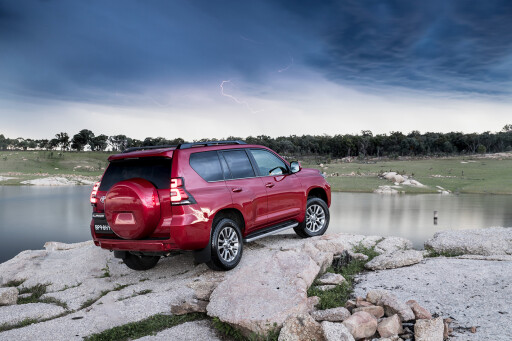
Emergency automatic braking (now on all automatic models) headlines the safety upgrade and brings adaptive cruise control with the commonality of hardware (front camera, etc.) and even some software.And while the auto braking is something you don’t wish to sample, adaptive cruise control is something you’re likely to use if you do any expressway or long-distance open-road driving.
The smart thing Toyota has done is retain manual cruise, so the driver can choose either. Adaptive cruise can be very good in some driving situations – the heavier the freeway traffic, the better it is – but doesn’t work well all the time. The GXL’s adaptive cruise is more seamless and effective in general operation than some, but it’s still better to have the option of manual cruise in low and medium density expressway traffic, where speed differentials between vehicles are greater. The GXL also gains lane-departure warning, which is either handy or annoying depending on your approach to driving – “am I driving the car or is it driving me”. At least you can switch it off.
The GXL gains a rear locker but activating it cancels the traction control on the front wheels (and not just the rear wheels), so it’s not really a win-win. This is the same setup as the Hilux. The now discontinued FJ Cruiser remains the only Toyota 4x4 where you can keep the front traction active with the rear locker engaged.
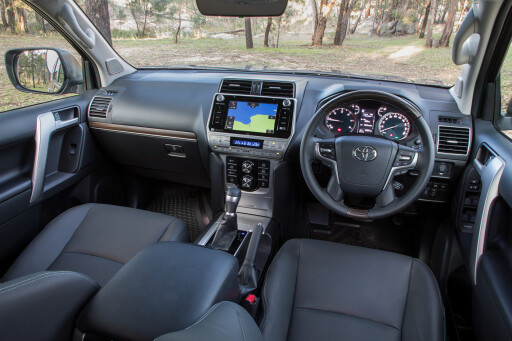
The GX tested was an entry-level five-seat manual. Interestingly the six-speed manual in the Prado isn’t the same as the six-speed now in the Hilux, as the six-speed from the 3.0-litre engine was retained when the 2.8 engine was introduced. The big difference between the gearboxes is that the Prado manual has a single overdrive gear (fifth is 1:1), while the Hilux’s six-speed manual has two overdrive gears (fourth is 1:1), with sixth being notably tall.
The Prado manual’s overall gearing is notably shorter than the automatic Prado and is better off for it. The automatic’s gearing is too tall at legal highway speeds if the road is at all undulating, which leads to some shuffling back and forth between fifth and sixth. In contrast, at highway speeds, the lower-geared manual carries top gear much better, yet the engine never feels busy.
As ever, the Prado offers comfort and surprising refinement in an old-school-tough and off-road-capable package. After all, the Prado is part of the Land Cruiser family, and it certainly doesn’t let the family name down.
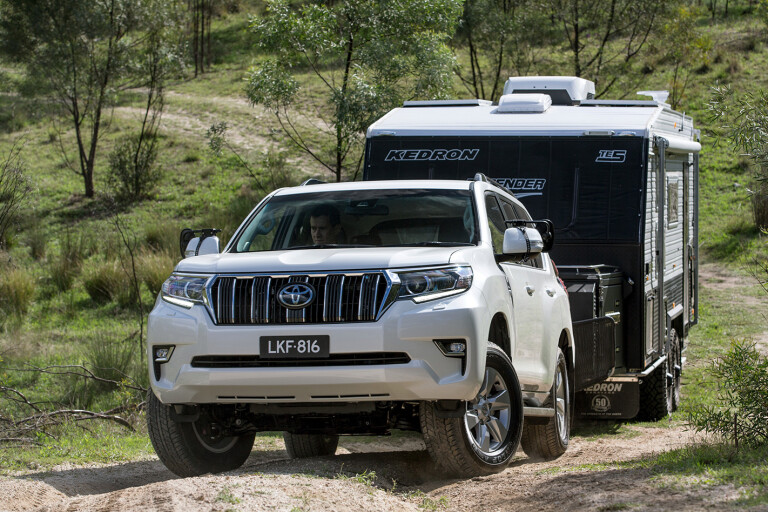
MY18 NEW KIT
ASIDE from the towing and GCM upgrade for all Prado automatic variants, the MY18 Prado also brings new equipment to all model grades and price reductions for the manual GX, manual GXL, VX and Kakadu.
Most significantly, all automatic models now have autonomous braking, radar cruise, lane-departure warning and auto high beam, while the GX manual gets sat-nav and the GXL manual gains LED headlights, DRLs and fogs.
The GXL auto gains Optitron instruments, a rear diff lock and the option ($3500) of leather seats, plus heating, cooling and electric adjustment for the driver and passenger.
The VX gains a rear locker, as well as blind-spot monitoring, rear cross-traffic alert, and multi-terrain and panoramic-view monitors.
The Kakadu adds the panoramic-view monitor and then adds ‘Drive Mode Select’, which allows the driver to select different powertrain and chassis settings.
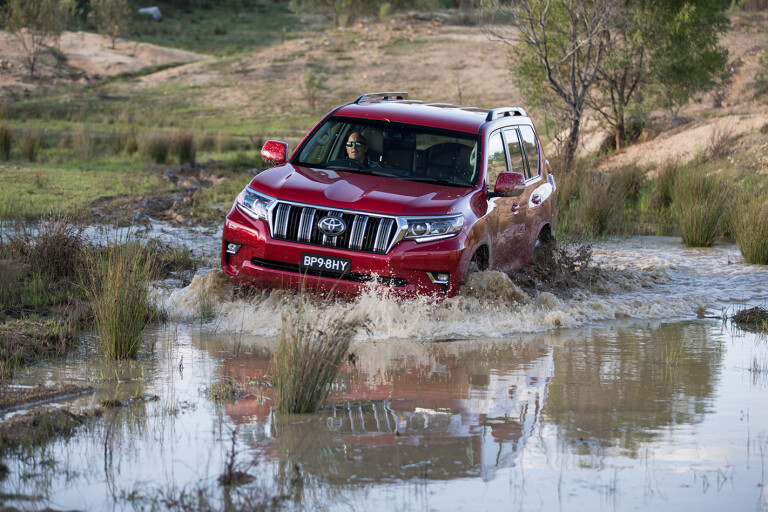
TOYOTA PRADO GXL (MY18) SPECS
Engine: 2.8-litre 4-cyl turbo diesel
Max power: 130kW at 3400rpm
Max torque: 450Nm at 1600-2400rpm
Gearbox: Six-speed automatic
4X4 system: Dual-range full-time
Crawl ratio: 36.1:1
Construction: Separate-chassis
Front suspension: Independent/coil springs
Rear suspension: Live axle/coil springs
Kerb weight: 2325kg
GVM: 2990kg
Payload: 665kg
Towing capacity: 3000kg
GCM: 5990kg
Fuel tank capacity: 150 litres
ADR fuel claim: 8.0L/100km
TOYOTA PRADO Range & Prices
Prado GX: $53,490 (manual)
Prado GXL: $59,990 (manual)
Prado VX: $73,990
Prado Kakadu: $84,490
Auto on GX & GXL: $3,000
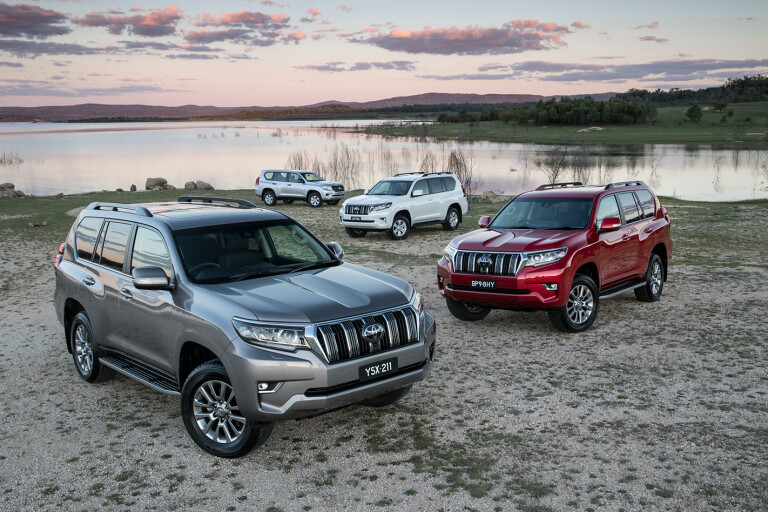

COMMENTS